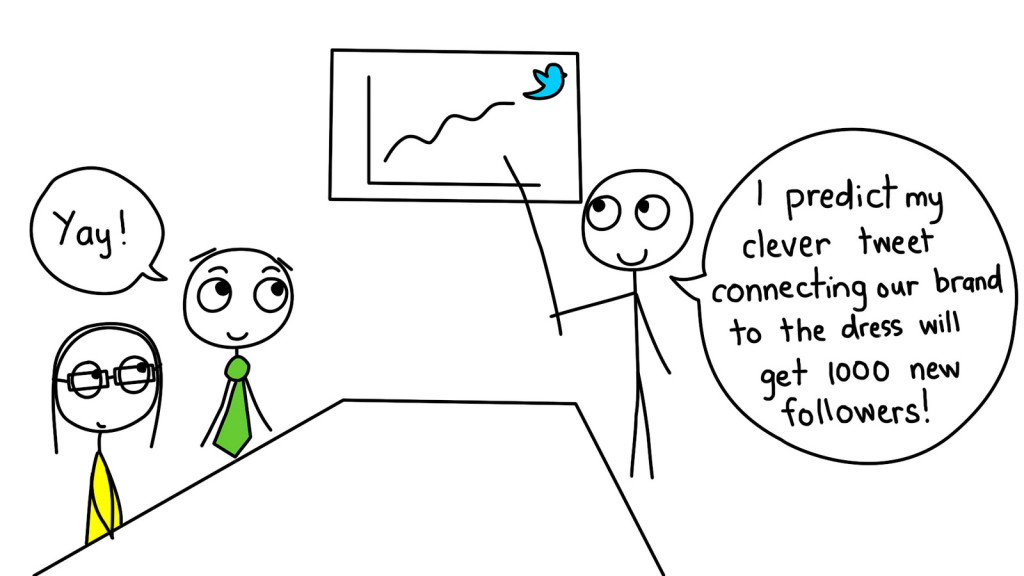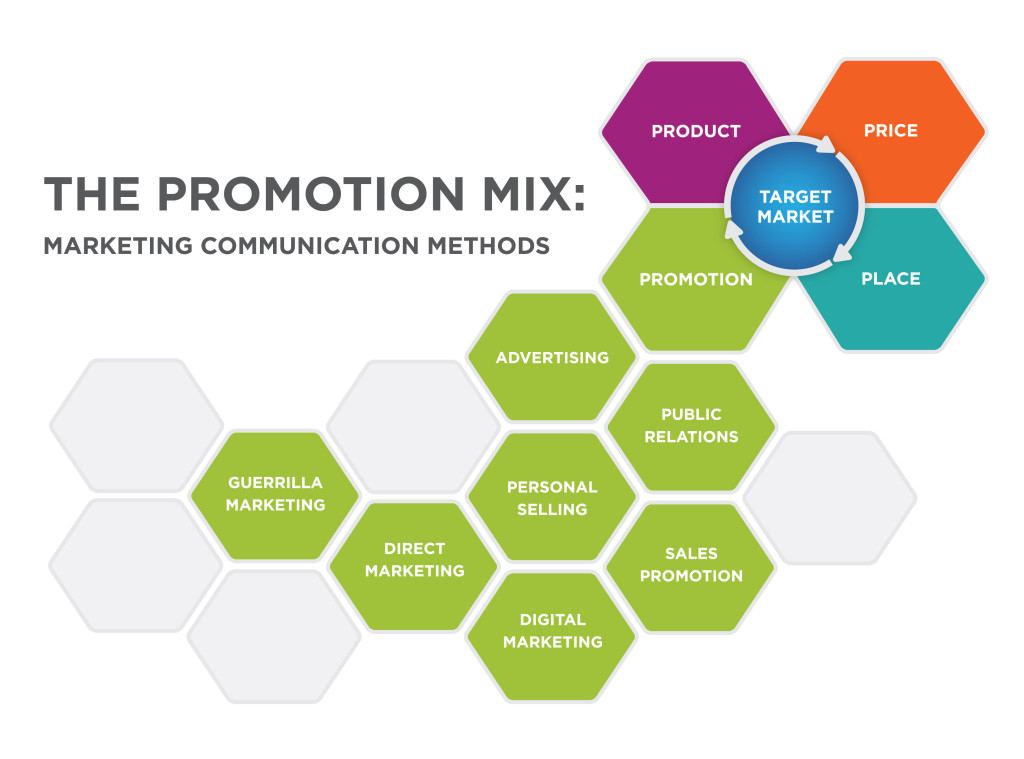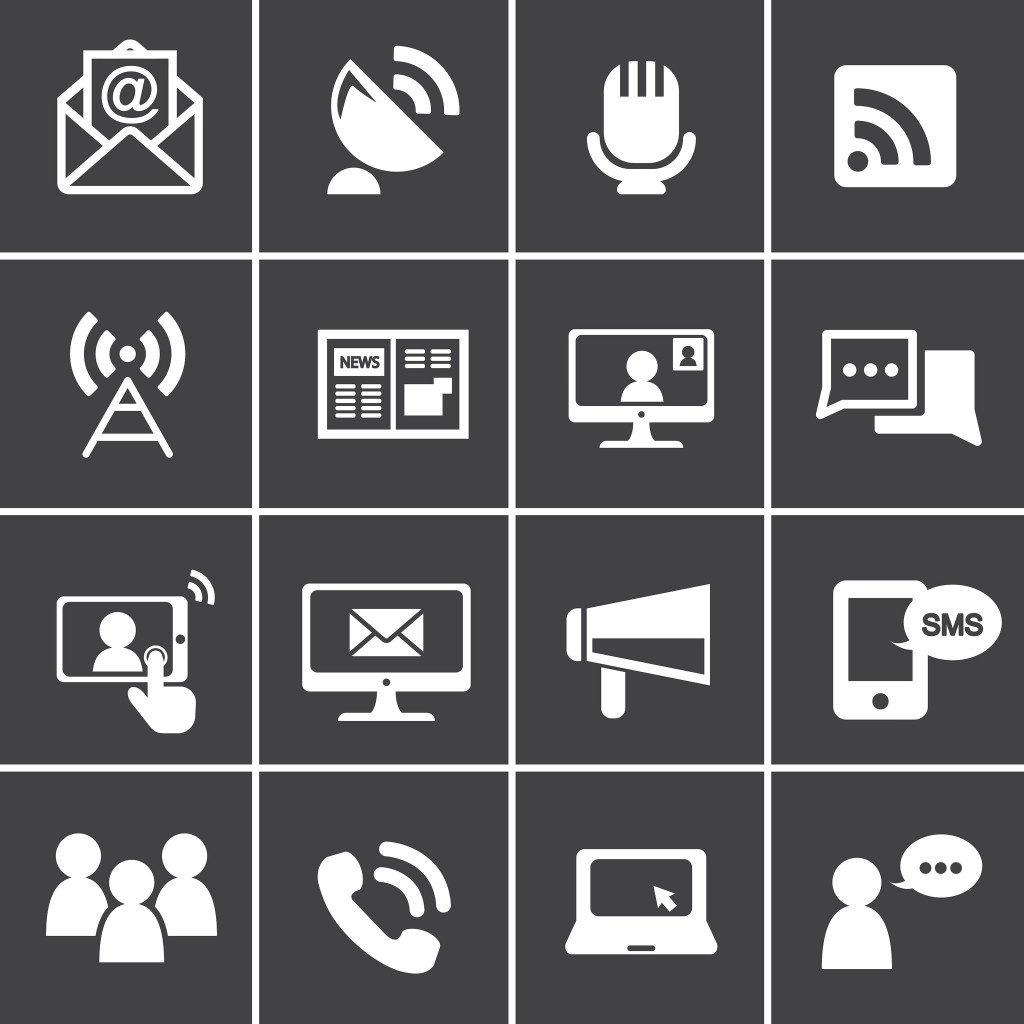What you’ll learn to do: explain integrated marketing communication (IMC) and its connection to the organization’s marketing strategy
Promotion is a powerful part of the marketing mix because it determines what and how you communicate with target audiences. In today’s world, promotion often has a fancy name: integrated marketing communication (IMC). Why the fancy name?
The number and variety of marketing communication tools have proliferated with the expansion of media, Internet, social, and mobile technologies. Marketers face the multipronged challenge of deciding which messages to communicate, which communication tools to use, and how to make the strongest impact with target segments.
Integrated marketing communication encourages marketers to think about communication in a coordinated way. They ask: How can we orchestrate all the different means of reaching a target segment in order to maximize our impact?
The specific things you’ll learn in this section include:
- Define integrated marketing communication (IMC)
- Explain how IMC strengthens the impact of marketing communication tools
- List the primary marketing communication methods marketers use as part of their IMC strategy
- Explain how marketers use IMC in their campaigns in order to execute marketing strategy

IMC: Making an Impact with Marketing Communication
Having a great product available to your customers at a great price does absolutely nothing for you if your customers don’t know about it. That’s where promotion enters the picture: it does the job of connecting with your target audiences and communicating what you can offer them.
In today’s marketing environment, promotion involves integrated marketing communication (IMC). In a nutshell, IMC involves bringing together a variety of different communication tools to deliver a common message and make a desired impact on customers’ perceptions and behavior. As an experienced consumer in the English-speaking world, you have almost certainly been the target of IMC activities. (Practically every time you “like” a TV show, article, or a meme on Facebook, you are participating in an IMC effort!)
The videos you viewed in this module’s “Why It Matters” section provide ingenious and successful examples of integrated marketing communication, to give you a feel for what IMC is about. Not every IMC effort is that elaborate or creative, but from those examples, you can begin to see what’s possible when you bring together the right combination of ideas and communication tools focused on a common message and target segments.
What Is Marketing Communication?
Defining marketing communication is tricky because, in a real sense, everything an organization does has communication potential. The price placed on a product communicates something very specific about the product. A company that chooses to distribute its products strictly through discount stores sends a distinct message to the market. Marketing communication refers to activities deliberately focused on promoting an offering among target audiences. The following definition helps to clarify this term:
Marketing communication includes all the messages, media, and activities used by an organization to communicate with the market and help persuade target audiences to accept its messages and take action accordingly.
Integrated marketing communication is the the process of coordinating all this activity across different communication methods. Note that a central theme of this definition is persuasion: persuading people to believe something, to desire something, and/or to do something. Effective marketing communication is goal directed, and it is aligned with an organization’s marketing strategy. It aims to deliver a particular message to a specific audience with a targeted purpose of altering perceptions and/or behavior. Integrated marketing communication (IMC) makes this marketing activity more efficient and effective because it relies on multiple communication methods and customer touch points to deliver a consistent message in more ways and in more compelling ways.
The promotion mix refers to how marketers combine a range of marketing communication methods to execute their marketing activities. Different methods of marketing communication have distinct advantages and complexities, and it requires skill and experience to deploy them effectively. Not surprisingly, marketing communication methods evolve over time as new communication tools and capabilities become available to marketers and the people they target.
Seven common methods of marketing communication are described below:
- Advertising: Any paid form of presenting ideas, goods, or services by an identified sponsor. Historically, advertising messages have been tailored to a group and employ mass media such as radio, television, newspaper, and magazines. Advertising may also target individuals according to their profile characteristics or behavior; examples are the weekly ads mailed by supermarkets to local residents or online banner ads targeted to individuals based on the sites they visit or their Internet search terms.
- Public relations (PR): The purpose of public relations is to create goodwill between an organization (or the things it promotes) and the “public” or target segments it is trying to reach. This happens through unpaid or earned promotional opportunities: articles, press and media coverage, winning awards, giving presentations at conferences and events, and otherwise getting favorable attention through vehicles not paid for by the sponsor. Although organizations earn rather than pay for the PR attention they receive, they may spend significant resources on the activities, events, and people who generate this attention.
- Personal selling: Personal selling uses people to develop relationships with target audiences for the purpose of selling products and services. Personal selling puts an emphasis on face-to-face interaction, understanding the customer’s needs, and demonstrating how the product or service provides value.
- Sales promotion: Sales promotions are marketing activities that aim to temporarily boost sales of a product or service by adding to the basic value offered, such as “buy one get one free” offers to consumers or “buy twelve cases and get a 10 percent discount” to wholesalers, retailers, or distributors.
- Direct marketing: This method aims to sell products or services directly to consumers rather than going through retailer. Catalogs, telemarketing, mailed brochures, or promotional materials and television home shopping channels are all common traditional direct marketing tools. Email and mobile marketing are two next-generation direct marketing channels.
- Digital marketing: Digital marketing covers a lot of ground, from Web sites to search-engine, content, and social media marketing. Digital marketing tools and techniques evolve rapidly with technological advances, but this umbrella term covers all of the ways in which digital technologies are used to market and sell organizations, products, services, ideas, and experiences.
- Guerrilla marketing: This newer category of marketing communication involves unconventional, innovative, and usually low-cost marketing tactics to engage consumers in the marketing activity, generate attention and achieve maximum exposure for an organization, its products, and/or services. Generally guerrilla marketing is experiential: it creates a novel situation or memorable experience consumers connect to a product or brand.
Most marketing initiatives today incorporate multiple methods: hence the need for IMC. Each of these marketing communication methods will be discussed in further detail later in this module.
The Objectives of Marketing Communication
The basic objectives of all marketing communication methods are (1) to communicate, (2) to compete, and (3) to convince. In order to be effective, organizations should ensure that whatever information they communicate is clear, accurate, truthful, and useful to the stakeholders involved. In fact, being truthful and accurate in marketing communications is more than a matter of integrity; it’s also a matter of legality, since fraudulent marketing communications can end in lawsuits and even the criminal justice system.
Marketing communication is key to competing effectively, particularly in markets where competitors sell essentially the same product at the same price in the same outlets. Only through marketing communications may an organization find ways to appeal to certain segments, differentiate its product, and create enduring brand loyalty. Remaining more appealing or convincing than competitors’ messages is an ongoing challenge.
Ideally, marketing communication is convincing: it should present ideas, products, or services in such a compelling way that target segments are led to take a desired action. The ability to persuade and convince is essential to winning new business, but it may also be necessary to reconvince and retain many consumers and customers. Just because a customer buys a particular brand once or a dozen times, or even for a dozen years, there is no guarantee that the person will stick with the original product. That is why marketers want to make sure he or she is constantly reminded of the product’s unique benefits.
Shifting from Mass Marketing to IMC
Prior to the emergence of integrated marketing communications in the 1990s, mass communications (also called mass marketing)—the practice of relaying information to large segments of the population through television, radio, and other media—dominated marketing. Marketing was a one-way feed. Advertisers broadcasted their offerings and value propositions with little regard for the diverse needs, tastes, and values of consumers.
Often, this “one size fits all” approach was costly and uninformative due to the lack of tools for measuring results (in terms of sales). But as methods for collecting and analyzing consumer data improved—for example, with store scanners and electronic data about consumer purchases—marketers were increasingly able to correlate promotional activities with consumer purchasing patterns. Companies also began to downsize their operations and expand marketing tasks within their organizations.
As these changes were under way, at the same time consumers were gaining access to more and different types of specialized “niche” media along with new ways of consuming media. Cable television, DVRs, and a plethora of digital media have contributed to significant fragmentation of the mass market. While expensive mass-media advertising is still an option, it has less and less of an impact every year. Instead, most organizations find that it’s more cost-effective to reach target segments using other marketing communication strategies. As consumers turn to niche media, marketers’ promotion strategies (and marketing communication) have focused more on individualized patterns of consumption and on segmentation based on consumer tastes and preferences.
Technology has also driven the shift toward integrated marketing communication. Increasingly, organizations use highly targeted, data-based marketing rather than general-focus mass communication and advertising. This approach generates more information that marketers can use for segmentation and targeting based on many different criteria. Virtually unlimited Internet access has increased the online availability of information, goods, services, and ideas. It has brought a proliferation of new and more interactive tools, including mobile technology, that can be used for marketing communication purposes. Broader transparency and access to market information have shifted power away from retailers and manufacturers and toward consumers and their ability to control or manipulate the market in their favor.
With these developments, marketing teams and advertising/creative agencies are expected to understand and provide all marketing communication functions—not just advertising—for their clients. Most organizations now allocate budgets toward a variety of marketing communication methods, not just mass media. Taking full advantage of marketing opportunities that exist in a more diverse and fragmented media landscape, marketing is now viewed as a two-way, interactive conversation between marketers and consumers. Marketing activities seek not only to expose consumers to a message, but to engage them actively in the marketing process. The days of one-way, broadcast-style marketing are over.
A proliferation of marketing communication tools and opportunities means marketers must 1) identify which tools are the best fit for the audience and marketing objectives and 2) deliver a unified message and coordinated approach across these tools. To help execute a marketing strategy, multiple marketing communication methods and tools should deliver a well-coordinated message to engage the right people at the right time, in the right place, and doing the right things. This is what we mean by “integrated” marketing communications.
The Marketing Campaign
Determining which marketing communication methods and tools to use and how best to combine them is a challenge for any marketer planning a promotional strategy. To aid the planning process, marketing managers often use a campaign approach. A campaign is a planned, coordinated series of marketing communication efforts built around a single theme or idea and designed to reach a particular goal. For years, the term “campaign” has been used in connection with advertising, and this term applies equally well to the entire IMC program.
Organizations may conduct many types of IMC campaigns, and several may be run concurrently. Geographically, a firm may have a local, regional, or national campaign, depending upon the available funds, objectives, and market scope. One campaign may be aimed at consumers and another at wholesalers and retailers. Different marketing campaigns might target different segments simultaneously, delivering messages and using communication tools tailored to each segment. Marketers use a marketing plan (sometimes called an IMC plan) to track and execute a set of campaigns over a given period of time.
A campaign revolves around a theme, a central idea, focal point, or purpose. This theme permeates all IMC efforts and works to unify the campaign. The theme may refer to the campaign’s goals—for example, KCRW “Capital Campaign” launched by the popular Los Angeles-based public radio station KCRW to raise $48 million to build a new state-of-the-art media facility for its operations. The theme may also refer to the shift in customer attitudes or behavior that a campaign focuses on—such as new-member campaigns launched by numerous member organizations, from professional associations to school parent-teacher organizations. A theme might take the form of a slogan, such as Coca-Cola’s “Taste the Feeling” campaign or DeBeers’ “A diamond is forever.”
Clear Channel is a marketing company that specializes in outdoor advertising. For their latest advertising campaign in Switzerland, they created a slogan-based theme, “Where Brands Meet People,” and asked their clients to participate in dramatizing it. Dozens of Swiss companies gave their logo to be used as individual “tiles” in three colorful mosaic portraits. These mosaics appeared on the web and on the streets of Switzerland. Click here to see a high-resolution image of one mosaic and check out all the brands that make up the mosaics. Some of the billboards appeared in animated form, as below:
Marketing campaigns may also adopt themes that refer to a stage in the product life cycle, such as McDonald’s 2015 “All-Day Breakfast” rollout campaign. Some organizations use the same theme for several campaigns; others develop a different theme for each new campaign.
In a successfully operated campaign, all activities will be well coordinated to build on one another and increase the overall impact. For example, a single campaign might include:
- Advertising: A series of related, well-timed, carefully placed television ads coupled with print advertising in selected magazines and newspapers
- Direct marketing: Direct-to-consumer mail pieces sent to target segments in selected geographic areas, reinforcing the messages from the ads
- Personal selling: Preparation for customer sales representatives about the campaign to equip them to explain and demonstrate the product benefits stressed in advertising
- Sales promotions: In-store display materials reflecting the same messages and design as the ads, emphasizing point-of-sale impact
- Digital marketing: Promotional information on the organization’s Web site that reflects the same messages, design, and offers reflected in the ads; ads themselves may be posted on the Website, YouTube, Facebook, and shared in other social media
- Public relations: A press release announcing something newsworthy in connection to the campaign focus, objectives, and target segment(s)
For each IMC campaign, new display materials must be prepared, all reflecting common objectives, messages, design, and other elements to maximize the campaign’s impact.
People responsible for the physical delivery of the products or services must ensure that the distribution points are well stocked and equipped to deliver in all outlets prior to the start of the campaign. People managing public and media relations should be constantly kept aware of marketing planning, allowing them to identify and coordinate opportunities for earned media attention. Because public relations deals with media, conference/event organizers, and other stakeholders outside the organization, it is extremely important to give enough lead time for the public relations effort to take advantage of optimal timing in support of the overall campaign.
CC licensed content, Original
CC licensed content, Shared previously
All rights reserved content
- Clear Channel: Where brands meet people. Authored by: Charis Tsevis. Located at: https://youtu.be/u1b5EtGqUOI. License: All Rights Reserved. License Terms: Standard YouTube License




